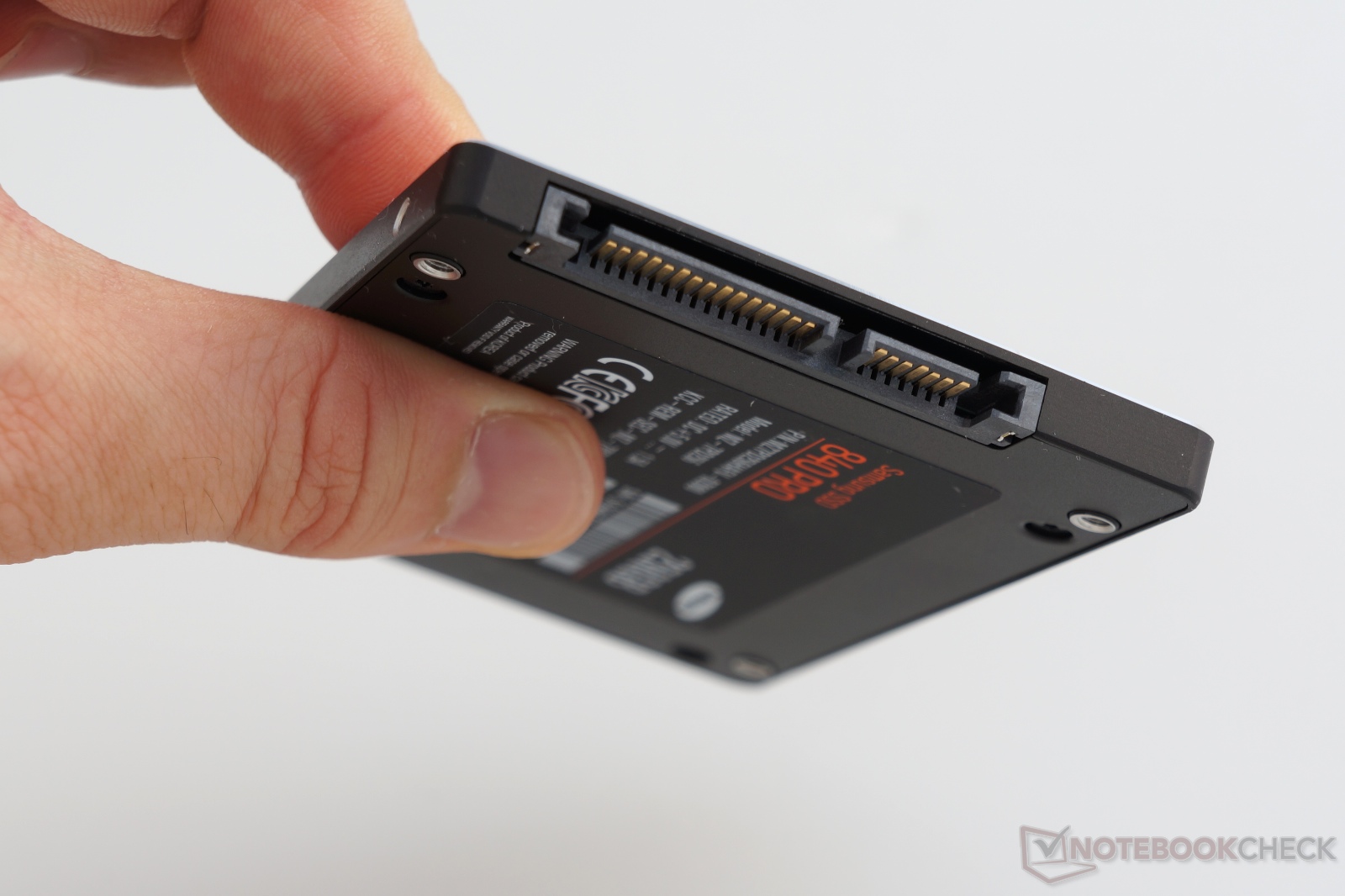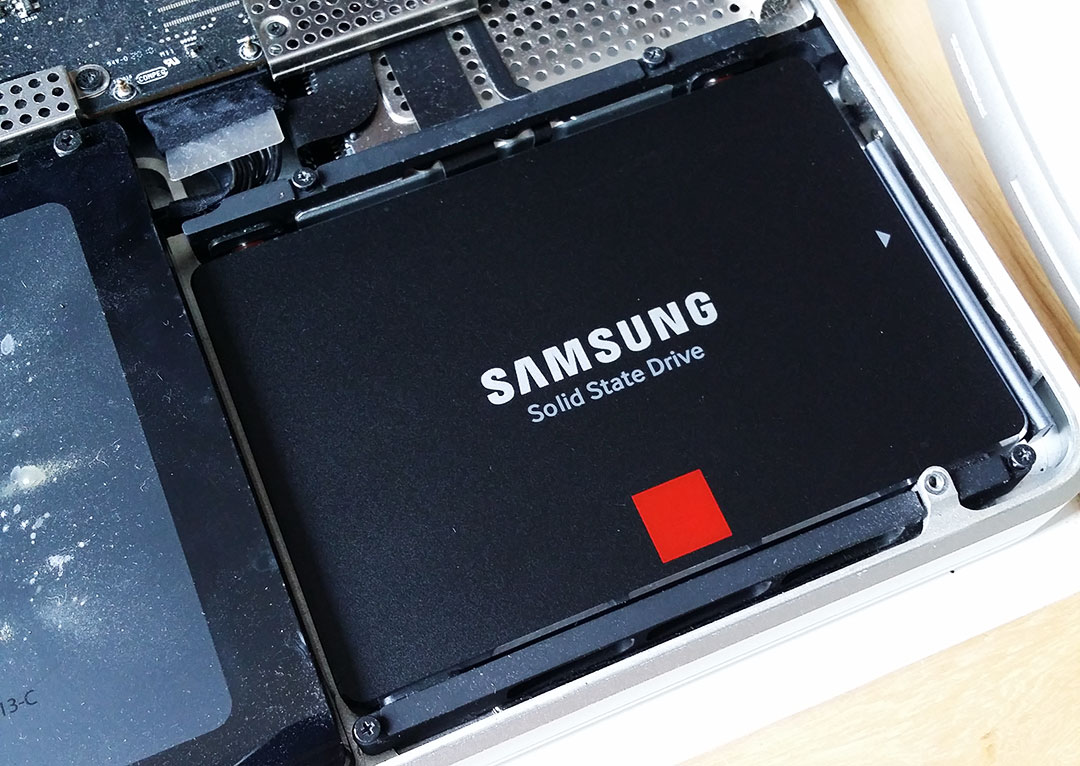Ssd Samsung 840 For Mac
Hidden away in this ‘ Samsung Tomorrow ‘ posting, was this line confirming that Samsung RAPID Mode is fully compatible with the 840 Pro SSD lineup, “Samsung also applied Samsung Magician 4.3 and the RAPID mode on its previous 840 Pro SSD line-up”. How to Install Samsung SSD 840 Pro into MacBook Pro and Cloning HDD (512GB) PRICING AND AVAILABILITY: GadgetsBoy: http://gdgts.by/ZI69. Find frequently asked questions and solutions for your upgraded computing life with Samsung V-NAND SSD products. FAQ for Consumer SSD, Portable SSD, NVMe SSD.

Samsung has released its 840 Evo SSD repair tool, as well as additional information on what causes the problem. It turns out that the issue is a bug in how the drive calculates what the voltage level within a cell should be in order to perform a proper data read. When data is written to triple-level (TLC) NAND, it’s stored at one of eight distinct voltage states. As time passes, the state shifts slightly and the drive has to compensate for that shift in order to read the older data. Auto-refreshing the data with a periodic re-write isn’t an option — TLC NAND already has lower durability than other form factors, and a periodic background rewrite would quickly exhaust the number of program/erase (P/E) cycles.
Jun 04, 2014 yesterday I upgraded my MacBook Pro (13', early 2011, 2,3GHz, 8GB RAM, Mac OS X 10.9.3) with a Samsung 840 Pro Series 256GB SSD. I know some people are talking about issues with Yosemite, but since you are running Mavericks, I have been running for several weeks in Mavericks with a Samsung SSD and Trim Enabler turned on with no problems.
The 840 Evo’s problem was that the calibration algorithm that’s supposed to detect the voltage levels in the cells apparently wasn’t calibrated correctly. As the data in the cells got older (the 30-day window was something of a moving target), the drive had more trouble reading the information — what it expected to see and what it was actually seeing were two different things. This led to a quick succession of read cycles as the controller attempted to compensate, which substantially degraded performance.
Smaller gaps between voltage levels make precise software calibration essential.
The good news is that this aggressive retry cycle won’t have harmed the flash in any way — writes are destructive to NAND, but reads are not. The further good news is that Samsung expects the new repair tool to fully resolve the drive’s problems. While we don’t have any SSDs configured appropriately to test it, we can confirm that the flash process went off without a hitch.
The caveats
When it comes to flashing a product, its always a good idea to read the instructions; firmware updates remain one of the few ways to truly trash piece of equipment. Samsung has a list of 17 — here are some of the most important:

- Only MBR and GPT partitions are supported.
- Performance restoration will not work if a drive is locked with a user password or if TCG/Opal or Encrypted Drive standards are in place.
- The application will not run unless at least 10% of the drive is free. This is non-negotiable.
- Firmware updates may fail if you are using an AMD drive controller. Samsung notes that the “latest” AMD driver prevents this, but doesn’t actually give the driver version number. AMD’s latest chipset drivers can be downloaded here; users also have the option to simply revert back to Microsoft’s AHCI driver before applying this patch. Any custom storage driver can cause the procedure to fail, so fall back to Intel, AMD’s latest, or Microsoft standard — or hook the drive to one of these ports if you’re currently using a different class of controller (Asmedia, Marvell, etc).
- NTFS is the only file system supported. Mac OS X and Linux patches are coming at an unspecified later date.
- RAID configurations are not supported. Drives configured in RAID cannot be patched at this time.
- Dynamic disks are not supported.
- Your PC will reboot 20 seconds after the procedure finishes. (Really? This is still a thing?)

And finally: If you need to update an 840 Evo with an OS installation on it, make sure you boot from that OS when you do the update. Dropping the 840 Evo in a secondary system and performing the update that way will kill the OS installation (Samsung only says this is due to a “Windows policy.”
The update can be downloaded from Samsung’s website; it doesn’t seem to be searchable from the standard 840 Evo product page.
Now read ExtremeTech’s SSD buyers guide
Samsung Ssd 840 Pro Specs
On release of the Samsung 840 EVO SSD earlier this year, Samsung introduced a new ‘caching’ technology called RAPID Mode, a technology that could increase Samsung EVO SSD transfer speeds up to 1.2GB/s with absolutely AMAZING low 4K random write speeds as well. RAPID Mode could be enabled through the free download of Samsung’s SSD Magician and the initial release was disappointing to many 840 Pro SSD owners as RAPID was only compatible with the Samsung 840 EVO SSD. Our review of the 840 EVO was very impressive with RAPID Mode benchmark results as high as 1.1GB/s and transfer speed testing of ISO, program and game files in under 3 seconds.
Earlier this morning, Samsung released information of their new 1TB 840 EVO mSATA SSD, an SSD with many firsts such as it being the first mSATA SSD that Samsung has made available to the consumer, the first capable of 1TB in storage, and the first capable of over 1GB/s speeds through RAPID Mode.
Hidden away in this ‘Samsung Tomorrow‘ posting, was this line confirming that Samsung RAPID Mode is fully compatible with the 840 Pro SSD lineup, “Samsung also applied Samsung Magician 4.3 and the RAPID mode on its previous 840 Pro SSD line-up”. We quickly downloaded the latest release of Samsung Magician software and checked out it’s compatibility:
Fortunately, our main system is running Samsung 840 Pro SSDs for both the main and backup drive so we started the new version of Samsung Magician software and immediately learned that the SSD firmware was out of date. Seamless firmware updates followed as well as the activation of RAPID mode on our Samsung 840 Pro 512GB SSD that we had reviewed some time ago.
This was followed by some rather impressive testing with both Crystal DiskMark and AS SSD:
Ssd Samsung 840 For Mac Desktop
These are impressive numbers by any standards and we should mention that they are similar to our other Test Bench, a system which has been running the original Samsung 840 EVO 1TB SSD since it’s review several months ago.
Samsung 840 Ssd
Even through AS SSD which is the workhorse of SSD synthetic testing, the Samsung 840 Pro SSD in RAPID Mode displayed excellent performance The only hitch we experience was the second result shown here in our Copy bench testing:
To ensure the compatibility of the Samsung 840 Pro SSD with RAPID, our main system will remain as it is and any pertinent changes will be appended to this report. If you would like to see a number of opinions and further benchmark results, check out this thread over at Overclock.

Samsung Ssd 840 Pro Driver
